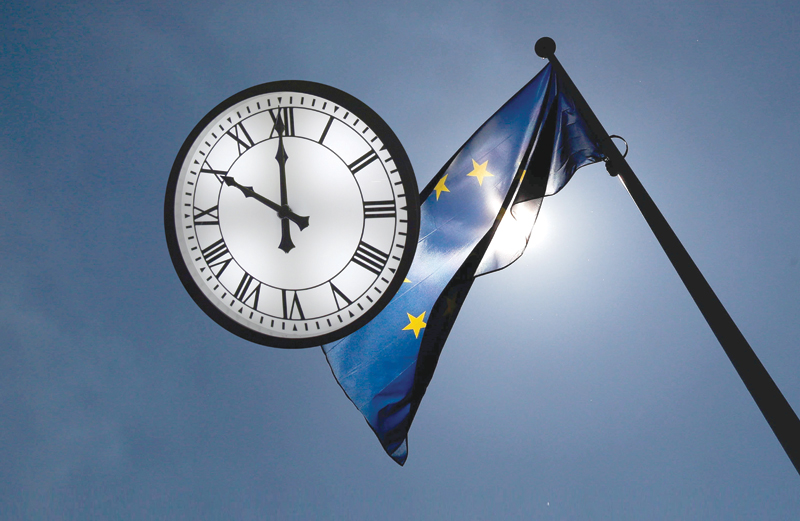

Juergen Ruf -
Turning the hands of the clocks in the town of Furtwangen in Germany’s Black Forest takes longer than in other places. Why? At Furtwangen’s German Clock Museum around 1,300 clocks are on display, with around 80 of them ticking the time away. Changing the clocks is always a challenge, one requiring manual labour.
It will be the same this weekend, when Germany waves goodbye to summer time and goes back to standard time as the clocks are turned back one hour.
The recent moves by the European Commission to stop the time-changing would make such work superfluous. Yet at the museum, folks have mixed feelings about this prospect. And they encourage you to study the history books on the subject.
But for now, on Sunday morning (October 28) the clocks will be turned back an hour across Europe and time will be returned to the standard daylight-hours, or winter time. If the European Commission has its way, this twice-yearly changing of clocks will be put to an end. Next year would be the last time it takes place, dispatching clock-changing to the history books.
“Naturally we have closely followed the debate,” says Johannes Graf of the German Clock Museum. Changing the time is always an issue in the museum, a place that exists not just to tell about clocks but about the history of measuring time itself. “It is a topic that affects everyone, that everyone has an opinion about and that from the outset has provoked extremely controversial and emotional debate,” the historian says.
Changing the time goes back over a hundred years, to May 1, 1916, when clocks around the world were set one hour ahead. “Back then, in 1916, Germany was in the midst of World War One,” Graf notes. “The changing of time was ordered by the German Empire as a means to save energy and at the same time to demonstrate power.”
Graf said Germany wanted to tell the world what time it was. But there was resistance at home — from the populace, farmers and even in parliament. Documents from the period show this. So in 1919, in the early days of the post-war Weimar Republic, it was abolished again.
The issue was resurrected in the 1940s during World War Two and its aftermath, when it was suggested once again as a way to cut energy usage by making better use of daylight hours.
But in 1949, daylight savings time, unpopular with many people, was ended — only to see Europe in a mish-mash of time zones some three decades later.
Some countries kept daylight savings time, others scrapped it, and those countries that did change their clocks did so at different points. The German weekly magazine Spiegel spoke in 1977 of a “Time Salad” to describe the situation in Europe.
In 1980, Germany reinstated daylight savings time and Switzerland followed a year later as the last country in central Europe to do so. For the past 22 years summer time has been uniformly applied throughout Europe, after the EU in 1996 agreed on the twice-a-year clock change for everyone: One hour ahead for the summer period, one hour back for the winter period.
“The advantages that the advocates of the time-changing had hoped for never materialized and have long since been disproven by studies,” says Museum director Eduard C Saluz.
“The effort involved stands in no relation to the advantages (of standard time), and the energy-savings are measured... low,” he said.
Throughout history, the policy’s opponents tended to “regard the state-imposed change of time as an incursion into their personal freedom,” according to Saluz.
But one advantage is that time is now uniformly regulated, historian Graf points out. “A single period for all of Europe is a major achievement, a sign of European unity,” he argues. It would be surprising to give this up.
By contrast, it would be problematic if national states each go their own way in the case of an abolishment, creating differing time zones in Europe. The aim should be common, European-wide solutions.
“The EU-unified time change back then aimed at cross-border harmonization of time and living circumstances of a Europe coming together,” Graf went on. This still applies today. The goal of energy saving had never played a decisive role for the EU.
At the clock museum, clockmaker Matthias Beck acknowledges the twice-yearly ritual of moving the hands of his clocks is a challenge. In fact, he’ll start Saturday afternoon to start moving the hands of the old historical clocks — one hour back for winter time.
“On Sunday morning, when the first visitors arrive, all the clocks will be ticking away properly in time,” he said. — dpa
Oman Observer is now on the WhatsApp channel. Click here



